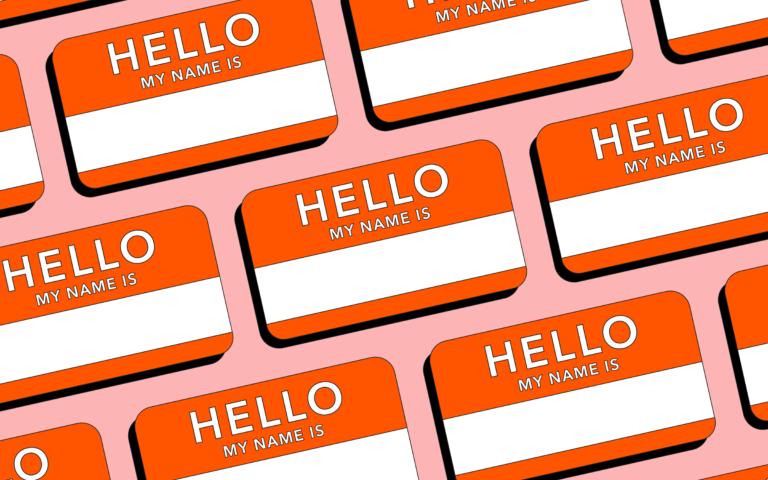
We’ve Rebranded 20+ Software Companies in 3 Years
Here’s What We’ve Learned.
An increasingly repeated adage is “Every company is a software company.” Legacy brands are embedding technology into their infrastructure, and technology-first companies are increasingly shaping culture. Take WW (Formerly Weight Watchers), who, under the helm of Oprah, rebranded to focus on lifestyle wellness centralized around a digital-first support system. Then, there’s Texture, the magazine app recently acquired by Apple and rebranded as Apple News+. As the biggest companies of our time are buying up software-as-a-service (SaaS) platforms, the public eye will be focusing on these players more and more.
We’ve been fortunate enough to work with brands on the forefront of this movement, including leaders in AI, machine learning and IoT. Thanks to our clients, we’ve drawn some observations that can inform how all software companies approach their branding for the future.
Part One: Making Change in the Market
1. Every Company Should Think Like a B2C Company
At Superhuman, we don’t buy into some common distinctions between B2C companies and B2B companies. Sure, B2B companies have to be focused on more niche buyers, oftentimes C-suite level execs. But the lines between “work mode” and “life mode” erode and blur more each day. Instead, treat people like people. Acknowledge their ambitions. Alleviate their pressures. Fuel their potential. People aren’t rational decision-makers; we’re hardwired to have cognitive biases and to rely on our gut to make important decisions. Your brand can and should provide the intangible weight to tip the scales your way.
Brands we’re inspired by: Dropbox. Kazoo.
2. Plan for Growth Tomorrow
Maybe it’s a natural human tendency to be superstitious, but people don’t always feel comfortable planning for growth. But dreaming of a pie-in-the-sky future vision for your company is key to branding for the long haul. The software world is ruled by mergers and acquisitions, so expansion is often part of the recipe for what’s next. If you’re only thinking of today, you’re more likely to choose a brand name and strategy that will limit your ability to evolve.
Imagine if Google had named themselves Searchware. It would have been harder for them to expand into mobile technology and robotics. The same is true for your product portfolio. Do you have a flexible architecture in place to accommodate future acquisitions? Is it easy to navigate and expand what you offer? A strong vision can help answer both philosophical and structural questions.
Brands we’re inspired by: Naviga. Adobe Creative Cloud.
3. Throw Out Your Category Rulebook
The old saying that there’s safety in numbers shouldn’t apply to branding. Just because your competitors are doing it, doesn’t make it a good idea. This is a common tendency in software branding in particular. When comparing mission statements, messaging and even brand identity, it can be hard to tell the difference between companies in the category. And if it’s hard for Superhuman, imagine how difficult it is for your prospects. It creates what we call corporate camouflage (credit: Superhuman Design Director Andrew Beckman), which is confusing to customers and prospects alike.
The whole point of a brand is to communicate what makes you different. Avoid mimicking the competition because you think they know what they’re doing. Chart your own path, determine what you think is right, and create a differentiated brand that can become the next lighthouse for the category. Different is good.
Brands we’re inspired by: Mailchimp. Vinna.
4. Appeal to the End User, Not the Buyer
Understanding your buyers is crucial in software. To us, that means knowing their needs, hopes, dreams and pain points. But convincing buyers to love your brand won’t get you far if your end users find it frustrating, uninspiring or just plain buggy. Investing in a strong brand proposition that elevates the end user will prove you’re committed to them, ensuring they are both heard and empowered.
But this goes beyond branding. You also need to infuse that strategy and creative toolkit into your end user experience. Once users love using your software, they’ll make sure your buyer doubles down on their purchase. After all, end user reviews play a substantial role in buyer decision making.
Brands we’re inspired by: Slack. PowerSchool.
5. Design for Integration and Openness
Merger and acquisition activity is at an all-time high, because everyone is working toward an integrated future. Many of our clients are moving from a siloed, traditional product portfolio to an open, integrated platform that is often ruled by the cloud, powered by AI and accessible via subscription access. Getting there, however, is another challenge. It’s never too late to start making a plan for how your current portfolio can play nice in the streamlined world of the future.
Brands we’re inspired by: Spotify. Parallax.
6. Shape Your Brand, Not Just Your Product
Even the most seasoned software execs can find themselves mistaking their product for their brand. Your product’s capabilities are not the same as your mission statement. Your brand’s vision is not the same as your product vision. Here’s why: Your brand is more than the sum of your products. Products change, evolve or become obsolete. Your brand is much more timeless, representing your approach to innovation, customer service, thought leadership and beyond. A strong, compelling brand adds value to your company that no amount of acquisitions or R&D investments can create. Beyond that, it also unites your staff under a common vision, motivating people to work harder and smarter.
Brands we’re inspired by: DScout. Kibo.
7. Win By Being Customer-Obsessed
The brands that act in the best interest of their customers, who take time to listen and understand their needs, challenges and goals, who value the feedback of even the most cantankerous clients, these are the brands that win. Today, providing a superior customer experience is a central focus of brand competition.
Too often, we see M&A action that makes financial sense but confuses or upsets customers. But it doesn’t have to be this way: this method of growth can align with what your customers truly need, if you take the time to listen. A great starting place? A customer advisory board. Get your key customers together. Host them at your HQ. Run ideas by them. Keep them constantly connected with your brand. It doesn’t matter if they are a CTO or an associate—these users have the ultimate authority over the success of your brand. Get them on your side, starting now.
Brands we’re inspired by: Salesforce. LogicMonitor.
8. Don’t Forget to Share Your Brand With the World
Companies will invest large budgets into building a brand, but stop just short of putting any investment in paid media. What good is the most beautiful brand in the world if you keep it to yourself? How will it shape the category if you don’t raise your awareness levels outside of your customer base?
If you’ve invested in a vision and story, think on how you can use it to build a following. Even investing wisely in search can help you go a long way. As we often say, just because you build it, doesn’t mean they will come. The best software branding builds the foundation, but campaign brings new audiences knocking on your door.
Brands we’re inspired by: Numerator. Squarespace.
Part Two: Making Change Within Your Organization
9. Bring In All Disciplines
Although your software branding may be managed by the marketing team, it’s built and made possible by everyone within your company. Find a way to empower your entire leadership team to have an educated, thoughtful discussion around the future of your brand positioning. And when gathering input, make sure to include employee feedback about what’s working, what’s not, and where they want to see the company headed. By building in smart inputs that can inform your process, you can make people feel heard, without open-sourcing every important decision.
We’ve found success in making progress by designating a small group of key decision makers to work side-by-side with us to hone in the work and then share it with a broader group. This drives timelines without creating a “too many cooks in the kitchen” problem.
10. Reckon with Your Blind Spots
Haven’t aligned on the company’s vision? Thinking about revamping your product portfolio? Putting off innovation investments because you’re not sure where it will lead? Chances are that repositioning your brand will prompt discussion. And sometimes, that new brand you’re building might change your direction. To get there, consider the value an outside perspective can add. Companies often want to make all major changes internally, but can find themselves spinning their wheels. When you’re living and breathing your current challenges, you may not have time for come up for fresh air. But as murky and challenging as it feels in the moment, remember: you’re not alone. Chances are, other companies like yours have faced similar challenges. Bringing in a consultant or agency with software branding experience can add valuable perspective to your process.
11. Cultivate the Equity of Acquisitions
As we said above, corporate M&A activity hit an all-time high in 2018 and it doesn’t look like it will slow down any time soon. There’s a chance that your software brand will make an acquisition to drive growth. Although integrating the offering into your product portfolio or existing solution may be the right move financially, it may not be what customers are looking for. In some cases, the brand of the acquired company may have a better reputation and customer retention than your brand—after all, there’s a reason you wanted to acquire them in the first place, and it probably had more to do with the potential size and loyalty of their customer base.
Don’t risk upsetting the apple cart. Approach your software branding integration like a chess game rather than roulette. Understand the differences and similarities of the two (or more) companies’ brand equity. Investigate current awareness levels through formal research or informal keyword analysis and website traffic. Putting in time to do this homework is an investment, but one that will pay off in retaining customer loyalty and leveraging new assets that will drive your goals.
Artwork by Sandy Meirovitz





